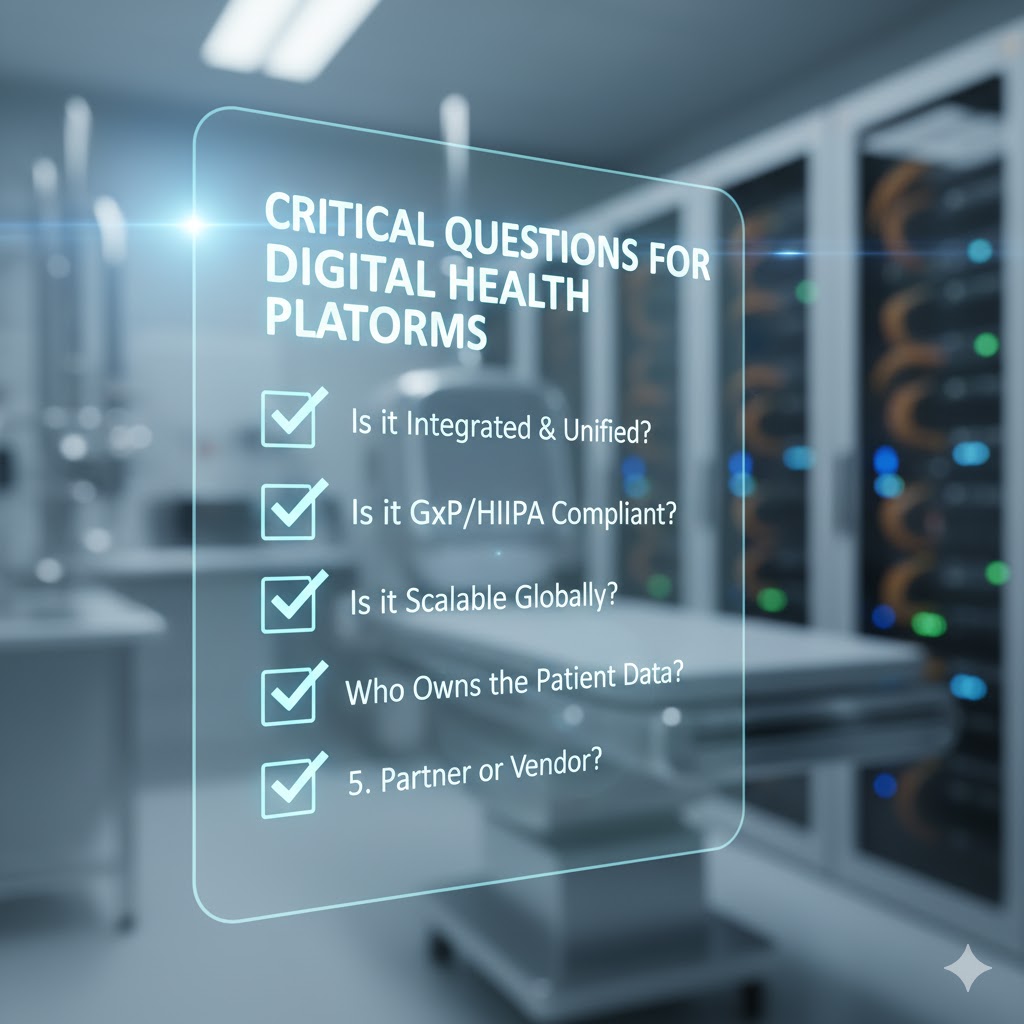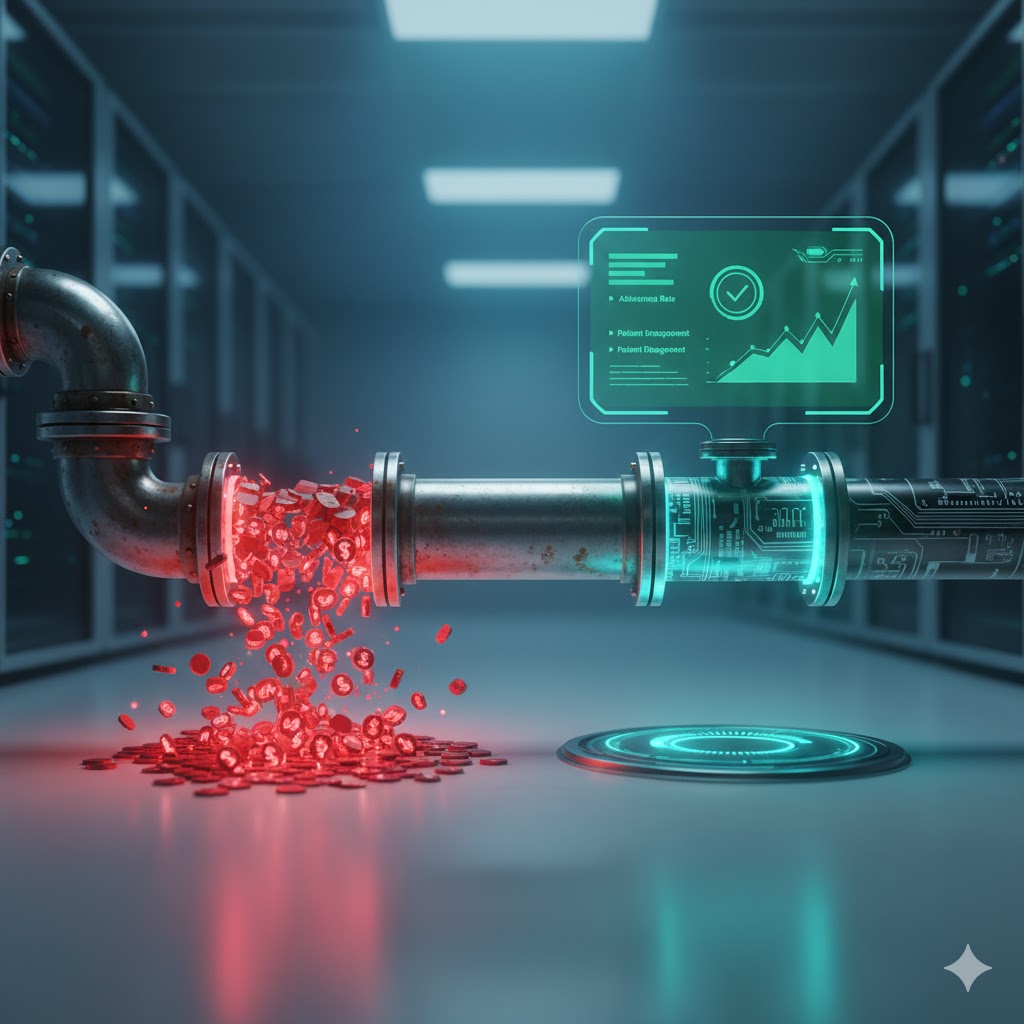How has IoT Contributed to Digital Therapeutics?
Digital therapeutics refers to evidence-based interventions or treatments delivered through digital or software-based technologies such as mobile apps, websites, wearable devices, or other remote monitoring tools. These technologies are designed to prevent, manage, or treat various health conditions and improve health outcomes. Digital therapeutics combine the latest advances in mobile technology, artificial intelligence, and behavioral science to create personalized interventions that can support patients in making behavioral and lifestyle changes, managing chronic conditions, or improving mental health. Digital Therapeutics are becoming a more mainstream form of treatment and have been gaining recognition as an effective way to deliver healthcare services. As technology continues to evolve, developments in the field of the Internet of Things (IoT) are providing a platform for new types of digital therapies to be created. In this blog post, we will explore how advancements in IoT technology are helping push forward digital therapeutics and the various benefits that come with it.
IoT and Digital Therapeutics
The Internet of Things (IoT) is a network of connected devices that exchange data with each other and with cloud-based systems. Digital therapeutics are software-based treatments that leverage digital technologies to improve health outcomes. IoT technology can play a crucial role in delivering digital therapeutics by enabling remote monitoring of patients' health status and treatment adherence. Wearable devices like smartwatches and fitness trackers can collect data on vital signs, physical activity, and sleep patterns, providing real-time feedback to patients and healthcare providers.
Moreover, IoT-enabled devices can facilitate seamless integration between digital therapeutics and electronic health records (EHRs), enabling healthcare professionals to monitor patient progress and adjust treatment plans in real-time. For example, a patient's blood glucose levels could be monitored through a wearable device and sent to their healthcare provider for analysis, allowing for timely interventions to prevent diabetic complications.
IoT also has the potential to improve patient engagement and adherence to digital therapeutics by providing personalized feedback and reminders. For instance, a mobile app for mental health therapy could use data from a user's wearable device to identify periods of stress or anxiety and provide targeted coping strategies.
Benefits of IoT for Digital Therapeutics
IoT (Internet of Things) has the potential to bring many benefits to digital therapeutics. Some of the benefits include:
1. Facilitates healthcare providers: IoT can enable healthcare providers to remotely monitor patients' health parameters and adherence to treatment regimens. This can help detect early warning signs of disease exacerbation and prevent hospitalizations.
2. Personalization: IoT can enable personalized treatment plans based on individual health data, improving treatment outcomes and reducing the burden of chronic diseases.
3. Real-Time Feedback: IoT can provide real-time patient feedback on their health parameters, such as blood glucose levels, blood pressure, and heart rate, improving patient engagement and compliance.
4. Cost-Effective: IoT can reduce healthcare costs by reducing the number of hospitalizations and emergency room visits through early detection of disease exacerbations.
5. Improved Data Analytics: IoT can generate large amounts of data on patient health parameters, which can be analyzed using advanced analytics tools to identify patterns and trends, leading to more accurate diagnoses and better treatment outcomes.
6. Enhanced Communication: IoT can enable seamless communication between patients, healthcare providers, and caregivers, improving the patient experience and reducing the burden of chronic disease management.
7. Streamlined delivery and increased accessibility: The Internet of Things (IoT) can play a significant role in streamlining delivery and increasing accessibility in digital therapeutics.
How does IoT Help in streamlining processes, and increasing accessibility?
Following are a few ways in which IoT contributes towards streamlining processes and increasing patient engagement and accessibility:
- Remote Monitoring:
IoT devices can be used to monitor patients remotely, providing healthcare professionals with real-time data on patient health. This can help clinicians to manage chronic conditions better and adjust treatment plans as needed, improving patient outcomes and reducing the need for in-person visits.
- Automated Medication Management:
IoT devices can be used to automate medication management, ensuring patients take their medications on time and in the correct dosage. This can help to improve patient adherence to treatment plans, resulting in better outcomes.
- Smart Wearables:
IoT-enabled wearable devices can monitor patient activity levels, sleep patterns, and other health metrics, providing clinicians with valuable insights into patient health. This can help clinicians to identify potential health issues early on, enabling them to intervene before the condition worsens.
- Telemedicine:
IoT can facilitate telemedicine, allowing patients to access medical services remotely, regardless of their location. This can improve patient access to care, particularly in rural or remote areas with limited access to healthcare.
- Supply Chain Management:
IoT can be used to monitor inventory levels, track shipments, and optimize logistics, improving the efficiency of the supply chain. This can help ensure that medications and medical supplies are delivered to patients in a timely and cost-effectively. Overall, the use of IoT in digital therapeutics can help to streamline delivery and increase access to healthcare services, improving patient outcomes and reducing the cost of healthcare.
- Automated Administration:
Digital therapeutics, or the use of technology-based interventions to treat medical conditions, has been gaining traction in recent years. The Internet of Things (IoT) has played a significant role in this trend by enabling the automated administration of these therapies.
IoT refers to the interconnectivity of devices and systems through the internet, enabling them to communicate and share data. In the context of digital therapeutics, IoT can be used to monitor patient adherence to treatment protocols and automate the delivery of therapy.
For example, IoT-enabled devices such as wearable sensors can collect data on a patient's vital signs and activity levels, which can be analyzed to assess their response to therapy. This data can be transmitted to healthcare providers in real-time, allowing them to make adjustments to the treatment plan as needed.
In addition, IoT devices can be programmed to automatically deliver therapy, such as medication or cognitive-behavioral interventions, at specific times or in response to certain triggers. This can improve patient adherence to treatment and reduce the burden on healthcare providers by automating routine tasks.
However, there are also challenges associated with the use of IoT in digital therapeutics. These include concerns about data privacy and security and the need for interoperability between different IoT devices and systems.
The Intervention of IoT in Digital Therapeutics
The use of IoT in digital therapeutics has the potential to improve patient outcomes and increase the efficiency of healthcare delivery. As technology continues to advance, we will see even more innovative applications of IoT in this field in the future.
Digital therapeutics uses digital technologies, including mobile apps, wearable devices, and other connected devices, to treat or manage various medical conditions. The Internet of Things (IoT) use in digital therapeutics has shown significant potential in improving patient outcomes and reducing healthcare costs. Here are some examples of IoT interventions in digital therapeutics:
1. Continuous Glucose Monitoring (CGM) Systems:
CGM systems are used to monitor blood glucose levels in patients with diabetes. These systems use IoT technologies to continuously collect data from a sensor that is placed under the skin. The data is transmitted wirelessly to a mobile app or cloud-based platform, which can provide real-time insights into glucose trends and help patients manage their diabetes more effectively.
2. Remote Patient Monitoring (RPM) Systems:
RPM systems use IoT devices, such as wearables, sensors, and home-based monitoring devices, to collect data on patients' vital signs and health status. This data is transmitted to healthcare providers, who can use it to monitor patients remotely and intervene if necessary.
3. Smart Inhalers:
Smart inhalers are IoT-enabled devices that track how often and how effectively patients use their asthma inhalers. This data is transmitted to a mobile app, which can provide patients with personalized feedback and reminders to help them manage their condition more effectively.
4. Telemedicine:
Telemedicine refers to using IoT technologies, such as video conferencing and remote monitoring, to provide healthcare services remotely. This can include virtual consultations, remote monitoring of chronic conditions, and even remote surgery.
5. Smart Pill Dispensers:
Smart pill dispensers are IoT-enabled devices that can remind patients to take their medications and track their adherence. Some smart pill dispensers can even dispense medications automatically based on pre-programmed schedules.
These are just a few examples of IoT technologies used in digital therapeutics. As these technologies continue to evolve, they have the potential to revolutionize the way we manage and treat various medical conditions.
Application of IoT in DTx
Existing Applications for Digital Therapeutics powered by IoT Pilots programs are already underway, exploring how existing AI applications can be used in conjunction with wearable devices connected by the Internet of Things. For example, Airstrip Technologies has developed an app called “Airstrip Cardiology,” which sends vital signs data directly from a patient’s wearable device (smartwatch) - enabling physicians to get real-time updates regarding their patient even if they are not physically present in the room with them during monitoring sessions. Similarly, Medtronic developed an AI system designed specifically for diabetes management to take readings from sensors on insulin pumps worn by those suffering from Type 1 diabetes and respond accordingly. This can even be programmed to work according to the personal preferences of the user beforehand.
Final Thoughts
Digital Therapeutics is a relatively new approach to healthcare delivery that utilizes technological advances to provide patients with evidence-based treatments without having physical contact with a medical professional. This type of therapy relies heavily on data collection and analysis - both actions which are greatly enhanced by using internet-connected devices powered by the Internet of Things. By leveraging this platform, digital therapeutics can now draw upon vast amounts of health data from multiple sources, allowing them to diagnose and treat an individual’s condition accurately and effectively.
By harnessing the power provided by the by-products within the Internet of Things ecosystem, digital therapeutics offer a wide range of possibilities that could potentially revolutionize healthcare delivery systems across multiple sectors globally once fully realized. As technology continues advancing, we can expect greater improvements in clinical diagnostics accuracy while simultaneously offering increased accessibility, all housed under one comprehensive platform - making it easier for both clinicians and patients alike.
Mahalo is the only clinical research platform to provide digital health app building blocks you can incorporate into your study or leverage to accelerate the development of your digital health app. Incorporate features like microlearning, connected devices, digital health diaries, questionnaires, medication management, patient-self scheduling, and more into a new or existing digital health product. The Mahalo platform is highly flexible, and our skilled team helps you configure your digital health app, clinical trial, or both. Click here to reach out to us!





